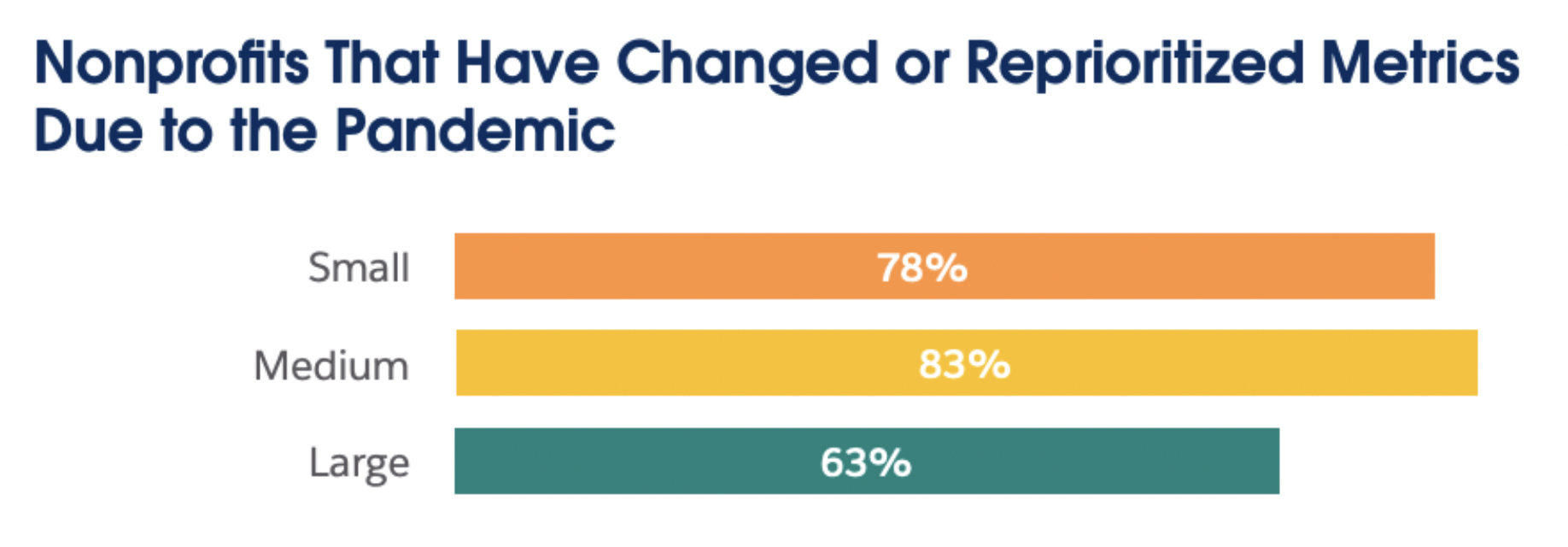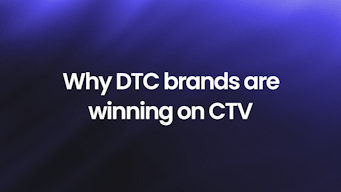Reshaping Nonprofit Marketing with CTV
While Giving Season really starts to take off in late Fall, donors both active and lapsed typically need to be cultivated months before their end-of-year donation deadline. So whether you’re already preparing for a successful Giving Tuesday campaign or trying to make up for not quite hitting earlier targets, here are some ways to ensure you engage your audience before the end of the year
Marketing budgets are always the first to get squeezed, and that’s especially true for nonprofit organizations, but there’s a better way that works especially well for exactly that sector! Because defining community stakeholders and fundraising prospect segments is key to the mission of any nonprofit, you already have the building blocks of an impactful, highly trackable campaign - leave the rest up to us!
The Swiss Army Knife of Fundraising
Nonprofit marketing leaders like Data Axle have been touting the benefits of CTV advertising in the not for profit sector for years, and while it may have felt too niche a few years ago, it has become a fundamental component of any solid omni-channel fundraising strategy. Consider its promise: the engagement and cachet of television advertising with the granular targeting and real-time reporting of digital channels. Moreover, nonprofit organizations rely much more heavily on graphics - especially video - to bring their mission to life, pushing digital video channels further up the list of strategic priorities.
There is nothing quite like an un-skippable testimonial video on a large screen that targeted donors will be watching along with premium on-demand content, volume on high, phone at the ready (did you know 92% of CTV audiences watch streamed programming with their phone in their hands?)!
Let’s look at the TV part of the CTV promise first: did you know that 87% of US households with a TV own at least one Connected Television? or that CTV ads boast a staggering 97% View Through Rate? Or that CTV viewership surpassed both cable and satellite earlier this year? That’s right, people spend a lot of time streaming television — nearly 8 billion hours of content per month! The pandemic disrupted everything, including our viewing habits and while you’ve probably adjusted your donor profiles based on that disruption, you may not have thought to rethink your channel mix in the same way. This is your reminder.
Of course one of the main reasons most nonprofit marketers haven’t considered exploring TV advertising is the historically prohibitive cost and long-term contract structure. Although, to viewers, the switch - or more usually, the toggle back and forth between both types - from linear television to CTV hasn’t felt that dramatic (after all, it’s still just watching TV), the ad buying process for each channel represents a profound paradigm shift. Instead of purchasing “air time,” advertisers are now bidding for impressions in a model that more closely adheres to digital benchmarks than legacy mediums like TV or radio.
This measurement shift is instrumental to the democratization of TV advertising because all of a sudden marketers are paying per CPM, not per spot. If we’re looking behind the CTV curtain, we’re more likely than not going to find a Google Ads-style bidder rather than TV upfronts. So how might that affect your organization? Well, for one it will require way less manpower, especially if you choose to buy CTV inventory programmatically (as most marketers have this year), and more importantly it means you will only pay for actual, trackable impressions - not a moment in time when you hope your audience will be watching. With recent studies revealing that 1 in 4 nonprofit emails are deleted before opening and 1 in 6 didn’t reach their intended recipient, tracking impressions, view-through rates, and web conversions is especially important.
Moreover, targeting and tracking ad-spend is an especially fraught topic this year, as Apple’s new privacy systems have all-but eradicated mobile ad targeting and Google’s cookie deprecation looms. The effects are far-reaching, hitting social media advertisers especially hard - if you were wondering why Meta was set to miss its quarterly projections by $10M, this is why. But finding audiences isn’t the only thing stopping social media companies from having a merry holiday season this year, they are also facing an incremental but significant crisis of confidence from their users: “Globally, the number of consumers who say social media causes them anxiety has grown 11% since Q2 2022 – again, with Gen Z & millennials the most likely to say this.” This is especially important for organizations - like nonprofits - who need to maintain a reputation for authenticity, trust, and good stewardship of resources.
A New Donor Demographic
Political upheaval, climate crises, a pandemic, you name it, we’ve been changed by it, and so have our donation habits. While nonprofits have always had to look ahead and cultivate younger sustaining donors, the past three years have seen a serious behavioral shift from their stakeholders that need to be addressed for any campaign to succeed moving forward. Case in point, here are the results from a recent Forbes nonprofit survey.
image

Advertisers are recalibrating their strategies to account for a steep rise in online donations, young donors committing more long-term relationships with specific organizations, and “pandemic donors” who need to be re-engaged to become sustaining donors, and more.
Younger donors are more likely than older generations to become sustainers (i.e., donors who contribute monthly through auto-payments). These types of donors are hugely valuable, but for most nonprofits, they don’t yet exist in a number that allows for profiling, meaning it can be hard to target new sustainers through rote targeting tactics. With CTV, however, lookalike audiences—audiences who favor monthly subscriptions and delivery boxes, for example—can be instrumental in finding these individuals with high lifetime value tendencies.
Younger donors are also ushering in the era of instant online donations on their phones, either with a QR code, text message, or directly through an organization’s paywall. And while they are much more comfortable with the medium, they still need to feel confident that the platform is trustworthy, which is another reason CTV campaigns have seen such success in the nonprofit sector. There is nothing quite like an ad placement next to premium long-form content as opposed to muted user-generated videos on social media.
Meanwhile, a recent Data Axle analysis of pre- and post-COVID metrics for select nonprofit clients found the subsequent giving rates for donors acquired during COVID have been on par with pre-COVID (2019) newly acquired donors, or better. In other words, these individuals have a high potential for conversion into lifetime donors—provided marketers can tailor their messaging and campaigns to acknowledge their unique journeys and meet them where they are.
Everything everywhere all at once
While it might feel like launching a CTV campaign is like doing everything, everywhere, all at once, it’s important to clearly define your campaign goals and KPIs so campaign success can be clearly assessed and built upon. Remember, it’s important to develop an omnichannel - as opposed to multichannel - strategy. That means you will be reaching stakeholders at every step of their journey, but not all at the same time. “For nonprofits in 2023, this means increasingly expanding efforts into digital channels including social media and connected TV. These channel extensions, when aligned with traditional outreach efforts, are proving highly effective in helping nonprofits boost retargeting campaigns, increase site traffic, lift brand awareness and reach a younger audience. CTV in particular is proving to be a highly cost-effective way to bolster results from other channels while simultaneously connecting with new audiences,” according to the latest nonprofit report from Advertising Week.
Some of the best CTV tools to help advertisers zero in on specific campaign goals are cross-device retargeting, real-time campaign reporting and editing, and massive channel inventory. Donor reactivation is at the heart of any fundraising campaign and CTV retargeting will afford you an opportunity to interact with engaged stakeholders in a whole new way. When dealing with new prospects, conversely, it’s important to remain open to surprise and leave targeting dimensions relatively open-ended at the beginning of a campaign in order to glean valuable insights.
For instance, advertisers could learn which ad creative is driving the most impact, or they may uncover that their campaign is resonating more with Gen Zs than Millennials, or within a specific geography, and adjust their strategy accordingly. An exponentially increasing streaming inventory majorly contributes to advertisers’ freedom to experiment and refine campaigns as they are running. Flexible television campaigns with real-time reporting finally allow non-profit marketers to respond to campaign goal fluctuations or mission-relevant real world events in a timely and powerful way, so don’t be shy! Experiment!
Finally, a few tips before you embark on the CTV journey:
- Get in early so that you can be ready to move when the rest of the industry catches on to the inevitable digitization of fundraising strategies and SVOD giants like Netflix accept the hold Connected advertising has on the industry.
- Embrace the paradigm shift. While you may be comfortable paying for impressions instead of air-time, it might be more difficult to break away from our addiction to last touch attribution and conversion. It is absolutely crucial to the success of their CTV campaigns that advertisers understand how CTV is a powerful incremental reach channel. Invest in knowledge around what your baseline metrics should be before embarking on a CTV campaign. Campaign results and powerful donor insights will follow.


